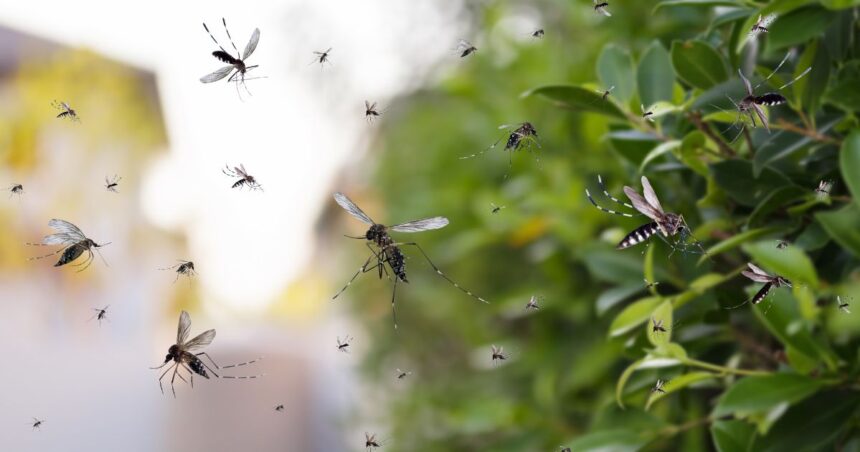Pests, such as insects, rodents, and mold, can significantly impact your indoor air quality by introducing allergens, bacteria, and other contaminants into your home environment. These pests spread dust, droppings, and particles that reduce air cleanliness, potentially causing respiratory issues or allergies.
Effective pest control is essential because it reduces these airborne irritants and helps maintain healthier indoor air. Using pesticides indoors can also impact air quality, so controlling pests through cleanliness, ventilation, and safe methods is crucial to minimize chemical exposure.
Your home’s air quality depends on managing both pests and the way you address them. Maintaining a balanced humidity level, cleaning regularly, and implementing proper pest control measures help protect your indoor air while minimizing the presence of harmful substances.
Understanding the Impact of Pests on Indoor Air Quality
The presence of pests inside your home can have a direct impact on the air you breathe. Their activity contributes to contamination through allergens, bacteria, and structural damage, all of which affect indoor air quality and your health.
How Pests Affect Indoor Air Quality
Pests such as rodents, cockroaches, and ants can degrade your indoor air quality in several ways. They produce allergens from their droppings, shed skins, and saliva, which can trigger respiratory issues or worsen asthma symptoms.
Additionally, pests often promote mold growth by damaging the structural integrity of your home. For example, carpenter ants erode wooden surfaces, increasing moisture buildup that fosters the development of mold and bacteria. This microbial growth further diminishes air quality.
You must also consider that rodents, such as mice, may carry viruses, like hantavirus, through airborne particles from their urine or feces. This contamination can pose serious health risks in places like Arlington and similar environments.
Familiar Sources of Pest-Induced Air Contamination
You will find pest-related air contaminants originating primarily from:
- Droppings and urine: These release allergens and harmful microbes.
- Decaying pests: Dead insects contribute to bacterial growth.
- Structural damage: Moisture infiltration caused by pest activity can encourage mold growth.
- Pesticide residues: Off-gassing from pesticide treatments after pest control can emit volatile organic compounds (VOCs).
In Arlington homes, pay special attention to ventilation after any indoor pesticide application to limit VOC buildup and improve indoor air quality. Using integrated pest management methods can help minimize chemical use while still controlling pests.
Risks of Poor Air Quality from Pests
If pest infestations persist without control, the resulting poor indoor air quality can lead to several issues for you and your family. The allergens pests create may cause allergic reactions, asthma attacks, and other respiratory problems.
Exposure to airborne pathogens from rodent waste increases the risk of infections, including severe diseases such as hantavirus pulmonary syndrome. Prolonged presence of mold due to pest-related moisture damage can cause chronic respiratory conditions.
You should address indoor air quality concerns related to pest control promptly to avoid these risks. Taking preventive measures and conducting regular inspections will protect your living environment and ensure your well-being.
Integrating Pest Control With Air Quality Improvement
Combining pest control with air quality measures requires careful planning and execution. Focus on methods that minimize chemical use and improve ventilation. This balanced approach protects your indoor environment from contaminants and pests.
Best Practices for Combining Pest Management and Air Quality Solutions
You should prioritize integrated pest management (IPM) strategies that reduce reliance on harsh pesticides. Use non-chemical controls, such as sealing entry points, maintaining cleanliness, and managing moisture, to prevent infestations.
Mix or dilute pesticides only in well-ventilated areas and limit amounts to what you need immediately. Avoid sprays that create airborne particles, which contribute to indoor air pollution.
Ventilation is key. Increase airflow during and after pest control treatments to reduce pesticide residues in indoor air. Regularly clean areas where pesticides can accumulate, as contaminated dust can worsen air quality.
Benefits of Air Quality Pest Prevention
Preventing pests through air quality-focused methods lowers your exposure to both insects and harmful chemicals. You reduce the presence of allergens, pathogens, and pest-related pollutants that degrade indoor air quality.
Air quality pest prevention also minimizes the need for repeated chemical use, limiting long-term toxic residue build-up. This is especially important for households with children, elderly individuals, or those with respiratory sensitivities.
By managing pests and pollutants together, you create a healthier living space that supports respiratory health and reduces the risks associated with indoor contaminants.
Available Indoor Environment Pest Solutions
You have access to a range of indoor environment pest solutions designed to protect air quality. These include traps, baits, and biological controls that do not release airborne toxins.
Eco-friendly products and IPM plans developed by professionals tailor pest management to your environment, focusing on sustainability and safety. Use products labeled for indoor use only, and avoid foggers or sprays that disperse chemicals widely.
Combining these solutions with air quality monitoring helps you maintain a pest-free, clean indoor space without compromising your health or comfort.

Health Benefits of Pest-Free Indoor Environments
Maintaining a pest-free indoor environment directly improves your home’s air quality, reducing exposure to harmful allergens and pollutants. This leads to tangible health benefits that affect both your respiratory system and your overall well-being over time.
Reduction of Respiratory Issues and Allergies
Pests such as cockroaches, rodents, and dust mites release allergens and microbial contaminants that degrade indoor air quality. These allergens can trigger asthma attacks, allergic reactions, and other respiratory issues in individuals who are sensitive to them.
By controlling pests effectively, you minimize the release of airborne particles, such as feces, shed skin, and saliva, that can cause inflammation and airway irritation. Additionally, pest control reduces the presence of volatile organic compounds (VOCs) from pest-related sources, further improving air quality.
Implementing indoor pest control also provides health benefits, including reducing the likelihood of mold growth, which often flourishes where pests leave behind moisture or organic matter. This lowers your risk of breathing difficulties and chronic respiratory problems, particularly in children and elderly household members.
Long-Term Effects on Overall Well-Being
A pest-free environment contributes to better sleep quality, as allergens that disrupt breathing and cause discomfort are minimized. When your indoor air quality improves, you experience fewer headaches, fatigue, and cognitive distractions associated with poor air quality.
Consistent pest control also protects your immune system by reducing exposure to bacteria and viruses transmitted through pests. This lessens the frequency of infections and supports your body’s natural defenses.
Investing in indoor pest control offers health benefits that help maintain a balance in your living space, fostering comfort and productivity while safeguarding your health over the long term.
Local Strategies for Improving Indoor Air Quality With Pest Control
Controlling pests effectively is vital for maintaining good indoor air quality. Proper measures reduce allergens, contaminants, and sources of moisture that pests introduce, all contributing to healthier indoor environments.
Community Initiatives and Resources
Many communities offer programs focused on improving indoor air quality through pest control education and support. These initiatives often involve workshops on sealing entry points, moisture management, and the use of non-toxic pest control methods.
Local health departments may provide resources such as inspection guides and free or low-cost pest management services. They emphasize integrated pest management (IPM), which reduces chemical use by combining physical controls, sanitation, and targeted treatments.
You can benefit from participating in these programs to learn how to safely remove pest habitats and prevent airborne allergens associated with infestations.
Targeted Approaches in Arlington
In Arlington, pest control strategies focus on sealing cracks, eliminating moisture, and maintaining cleanliness to improve indoor air quality. A place like Arlington encourages ventilation improvements alongside pest control, such as using exhaust fans in bathrooms and kitchens, to reduce airborne pollutants.
Residents are advised to use bait traps or targeted chemical applications rather than sprays, which can help lower indoor toxin levels. This thoughtful approach minimizes health risks while effectively managing pests that impact air quality.
For persistent issues, professional help from local experts ensures proper identification and removal, reducing potential health hazards efficiently.
For expert assistance in managing pests that affect your indoor air quality, call Critter Stop at (214) 234-2616. They specialize in humane and professional wildlife and pest removal, boasting a strong reputation for high-quality work and excellent customer service, backed by numerous positive reviews.



